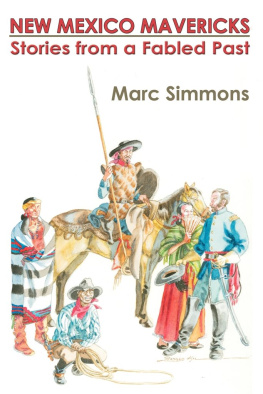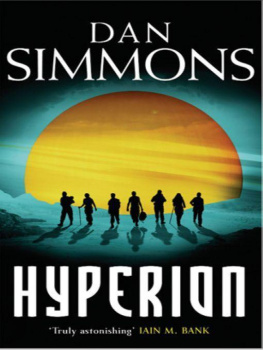THE
UTE INDIANS
OF UTAH, COLORADO, AND NEW MEXICO
THE
UTE INDIANS
OF UTAH, COLORADO, AND NEW MEXICO

VIRGINIA MCCONNELL SIMMONS
UNIVERSITY PRESS OF COLORADO
Copyright 2000 by the University Press of Colorado
Published by the University Press of Colorado
5589 Arapahoe Avenue, Suite 206C
Boulder, Colorado 80303
All rights reserved
First paperback edition 2001
Printed in the United States of America
The University Press of Colorado is a cooperative publishing enterprise supported, in part, by Adams State College, Colorado State University, Fort Lewis College, Mesa State College, Metropolitan State College of Denver, University of Colorado, University of Northern Colorado, University of Southern Colorado, and Western State College of Colorado.
The paper used in this publication meets the minimum requirements of the American National Standard for Information SciencesPermanence of Paper for Printed Library Materials. ANSI Z39.48-1984
Library of Congress Cataloging-in-Publication Data
Simmons, Virginia McConnell, 1928
The Ute Indians of Utah, Colorado, and New Mexico/Virginia McConnell
Simmons,
p. cm.
Includes bibliographical references and index.
ISBN 0-87081-571-7 (alk. paper) 0-87081-647-0 (pbk. : alk. paper)
1. Ute IndiansHistory. 2. Ute IndiansGovernment relations. 3. Ute
Indians
Social life and customs. I. Title
E99.U8 S55 2000
979.0049745dc21 99-088408
10 09 08 07 06 05 04 03 02 01 10 9 8 7 6 5 4 3 2 1
For the Nu-ci
Illustrations

Maps

Maps drafted by Yvonne Halburian
Preface

Although numerous archaeological and ethnological papers, historical articles, books, folktales, and fictional accounts about Ute Indians exist, this tribe is less well known than many other North American Indian tribes. Lack of familiarity appears to have been caused, at least in part, by the absence of readily available scholarly studies, as well as by neglect of the Utes in regional histories. What is generally known and retold to the point of redundancy can be found in articles and booksespecially in accounts of dramatic episodes, such as the Meeker Massacre and the Posey War, or about renowned individuals such as Chief Ouray and Chipeta or Walkara.
This history has been undertaken in an attempt to provide an overview of the Ute Indians beyond the often repeated and, unfortunately, often incorrect hearsay. I found myself delving into the excellent scholarly literature that does abound, despite its unfamiliarity to general readers, and reading countless imaginative accounts that have contributed to misinformation about Ute Indians. Everything had to be evaluated in terms of its potential contribution to an accurate, balanced history of the Ute people. Perhaps I did not succeed in winnowing out all of the misinformation, and I may well have contributed some of my own, for which I apologize.
This study makes apparent the fact that Ute Indians have been longtime, widespread occupants of Utah, Colorado, and northern New Mexico. They warrant recognition as successful adapters to diverse and sometimes harsh environmentsnot only the Rocky Mountains and other choice habitats such as the Utah Valley and Colorados intermontane parks and valleys but also arid and semiarid portions of the Great Basin and the Colorado Plateau. They even made sorties into the central and southern short-grass prairies.
Several excellent studies have concentrated on specific aspects of Ute material culture. For readers wishing to learn more about archaeology and ethnology than this single volume offers, I recommend especially the bibliographical entries by Sally Crum, Joel C. Janetski, Joseph G. Jorgensen, Marvin K. Opler, Anne M. Smith, and Omer C. Stewart, as well as the material in Volume 11 of the Smithsonian Institutions Handbook of North American Indians. Ute tales have been collected and published by the Southern Ute and the Uintah-Ouray Ute tribes and by Smith. Wick R. Miller is the accepted authority on Native American linguistics. Existing literature on several neighboring and related tribes gave me information and insights and is recommended to others who wish to understand Ute history.
A difficulty students of Ute Indians encounter is the incomplete and often contradictory nature of information about bands or groups and their distribution. Such problems can be attributed to the fact that Ute groups did not remain permanently within fixed boundaries or even territorial circuits, which appear to have been overly emphasized by some scholars. In addition, after Ute Indians acquired horses, became increasingly mobile, or were assigned to reservations, they became increasingly fluid, shifting their group affiliations or entering into temporary associations. My conclusions about the groups, their names, and their territories are as accurate as seems possible at this late date when much information has been lost. I hope this history has avoided as many such pitfalls as possible rather than having added to them.
Another source of confusion results from the fact that Ute Indians often had more than one name and that spellings vary, not only in the proper names of bands or groups but also in the names of individuals and places. Much variation arose when early white recorders attempted to put into English orthography the phonetically unfamiliar sounds of the unwritten Ute language. As a result, it is fairly common to find a variety of spellings in different publications, within one article, or even on a single page in a work. I have tried to use the most commonly accepted spellings of proper nouns, with alternates indicated when necessary and with translations as well. Readers with a special interest in language are referred to the publications of the Southern Ute Tribes Ute Language Program, which offers a grammar, a dictionary, and a collection of narratives in the native language.
Because an overview such as mine would lack context without the geographical setting of events, this account begins with a description of the varied lands of the Utes. I then summarize information about the misty origins of this people, a subject that unfortunately offers more questions than absolute answers but that still allows us to reach a few relatively safe conclusions. Most of the history is given chronologically, from Spanish contact to the early twentieth century through the Reorganization Act of 1934 and the work of the Indian Claims Commission. The volume concludes with changing conditions in the twentieth century.
Acknowledgments

In compiling this history, I owe a great debt to countless institutions, archives, and individuals. No work of this type would be possible without them.
Invaluable resources have been located at university and college libraries and in public archives. These include the New Mexico State Records Center and Archives, the Museum of New Mexico Division of Anthropology, Archives of the Archdiocese of Santa Fe, the Colorado Historical Societys Stephen H. Hart Library, the Denver Public Librarys Western History Department, National Archives of the Rocky Mountain Region, Fort Lewis Colleges Center of Southwest Studies, Archives of the University of Colorado at Boulder Libraries, the Utah State Historical Society Library, the University of Utahs Marriott Library, Southern Utah Universitys Reid Library, the University of New Mexicos Zimmerman Library, the American Heritage Center at the University of Wyoming, and The Colorado Colleges Tutt Library.
Next page







